The Fender Bassman – The bass amplifier that changed the guitar world
When thinking about rock amplifiers, the obvious name that crops up is Marshall. In fact, many modern and boutique amp builders still use Marshall amps, stock or ‘hot-rodded’, as a template for their designs. But back in the early 60s, when British guitarists went to Jim Marshall to make amps for them, the amplifier that he chose to base his design off of was the Fender Bassman.
The Fender Bassman
First introduced in 1952, the Fender Bassman was clearly, as the name implies, intended for the bass. And really, it was to amplify Leo Fender’s other creation, the Fender Precision Bass, which at that moment didn’t quite have a dedicated amplification of its own. In the meantime however, this amp was being picked up by harp players as well as guitarists.
The original combo underwent several changes before reaching its iconic form in 1958 with the 5F6-A circuit. This narrow panel tweed amp sported a GZ34 rectifier tube and came loaded with 4×10” Jensen P10R speakers. There were two channels, a Bright and a Normal, with separate volumes, shared Treble, Middle and Bass controls, and Presence knob.
My Fender Bassman
From the moment I saw the Fender Bassman, I knew I had to have one. Even if I didn’t play guitar, it looks nicer than any table I’ve seen. I would often see the amp in all its resplendent tweed glory on concert videos. It seemed to be in everyone’s rig. Almost every guitar album that I liked had a Bassman on it, or some version thereof.
But the reissue cost almost a £1000, which was a lot of money, and still is. Eventually, after I got my first ‘proper’ Stratocaster, I decided to take the plunge. I went to the local guitar shop, picked out a Bassman, and was very excited to take it home. I’d forgotten, of course, in my excitement, that I’d have to take the amp back on the bus. My recommendation is, that if you plan on bringing a 25kg amplifier from the shop home with you, it’s probably wise to arrange for some form of transport. Even if it is a trolly that will help you take the amp to the nearest bus station.
When I did bring it back, my friends and I huddled curiously around this giant tweed cabinet. It came with some sample settings, something about jumping channels. I plugged the guitar in and played a chord.
No FX
I’d like to mention that I had no effects or pedals at this stage, bar a Vox Clyde McCoy reissue wah. I wasn’t a huge fan of the digital effects of the time, and buying pedals that I liked was an indulgence that I felt I couldn’t really yet give in to. Luckily, I could get some overdrive out of my Blues Junior, and that was sufficient. Rehearsal spaces would often have some Marshall amps, and my college studio had a Pro Junior that sounded great cranked up.
But the Bassman was a different beast. It had no master volume, no ‘FAT’ or overdrive channels, and no reverb option. When I first got it home, jumped the channels and plugged it in, I could barely take it beyond 3 before it was too loud. It sounded great! But I have to admit, I was a bit bummed out. At that volume, it sounded nice, clean and chimey. The classic clean Fender tones were all there. But it didn’t have any reverb, and it was a long ways away from any mention of drive.
I wasn’t in any bands then, so the amp sat in the corner of the room, turned up barely a quarter of the way. Until one day, I thought, hell with it, and turned both channels to 12, and struck an open E.
The Chonk
It’s difficult to quantify what transpired next in words. My entire being disintegrated and rearranged itself. I saw the gods of rock n’ roll. I saw the past and the future, time and space conformed to a single point. Leo Fender somewhere, nodded approvingly. As those 45 Watts of raw tube power coursed through my body, everything I had read or heard about this mythical amp fell into place.
The chords were fat and juicy. Juicy? Dripping! Who needs reverb? At that volume, a few feet away from that amp, my body was still vibrating long after the notes had left the amplifier. And those notes! Those glorious notes! Sagging and compressing, ‘chonky’. The chonk was unbelievable! The combination of the attack, the drive, the slight sag, and perhaps my proximity to the amp, the notes sounded thick and full. Still with that unmistakeable ‘strat-y’ nasal tone. It wasn’t long before someone told me to turn the damn thing down.
But not before I had tapped into the endless possibilities this simple set-up could provide. Some of my favourite guitar players at that point, Roy Buchanan, or Danny Gatton, or Peter Green, were conjuring far more tones out of just their guitars and amps than most people with their entire rigs. The dynamics between their touch, and the way they utilised their volume controls, gave them a whole host of options right at their fingertips. Everything from glassy cleans to raw, unadulterated tube overdrive could be achieved with a simple roll of a knob.
Chasing the dragon
And that’s how my addiction started. I tried a few pedals that said they could sound like a cranked Bassman. I’ve since then tried several different amps that are supposed to sound like the Bassman, but at friendlier volumes. They all sounded great. And to be fair, probably did sound like Bassmans. But they didn’t ‘feel’ like a Bassman. And didn’t interact like a Bassman. I’m not saying that the amp needs to be turned up all the way for it to sound good, but… ok, maybe I am saying that. It definitely needs to be turned up enough for the tubes to start cooking, and those four 10” Jensens moving enough air for the notes to physically hit you, interact with you, and the guitar.
Apart from the sonic sweetness, and the beautiful valve-driven feedback, I feel it inspires me to play differently. The notes become alive. The amp doesn’t just amplify the guitar anymore, it becomes an integral part of the instrument.
Should you get a Fender Bassman?
The short answer is, yes. It’s not a fancy amp, and probably can’t compete with modern amplifiers that will give you a host of options. But that’s ok. Especially if you have pedals. I do think that getting an attenuator for the Bassman, or indeed, other similar vintage-y amps that are loud, kind of defeats the purpose. Moving significant amount of air, and really ‘feeling’ the notes, instead of just ‘hearing’ them, is part of their magic, at least in my opinion. So if you like simple things, vintage-y things, have a Strat or a Les Paul, and a space where you can safely bathe in the awesome tones of the Bassman, get it!
My Bassman has been heavily used since, and has also served as a wonderful coffee table!
3 responses to “The Fender Bassman – The bass amplifier that changed the guitar world”
 4,6 / 5,0 |
4,6 / 5,0 | 


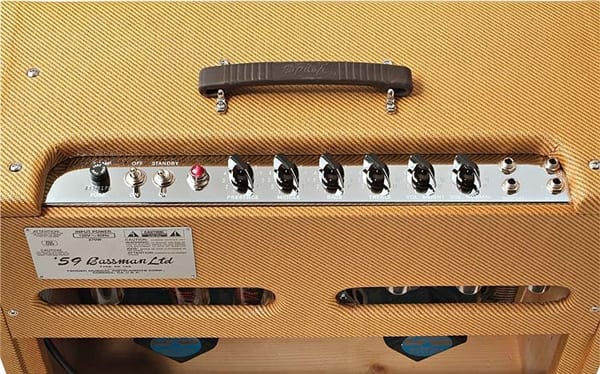
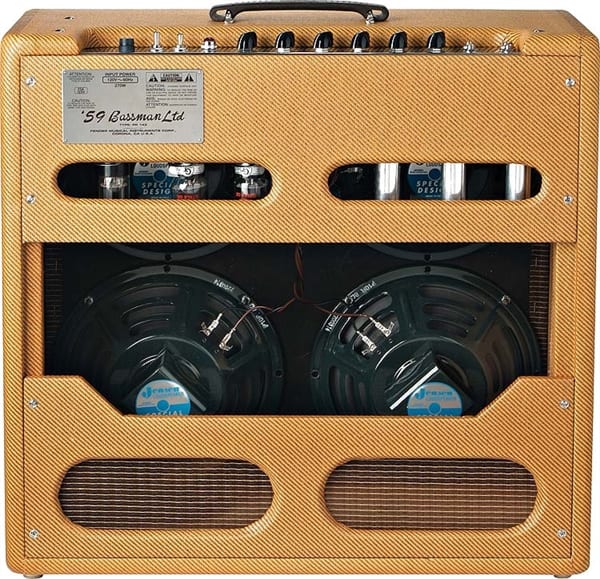
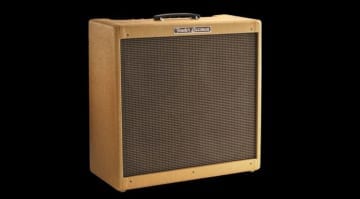



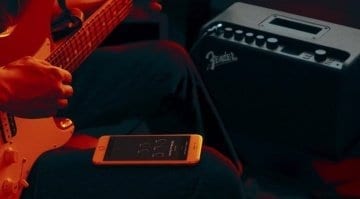
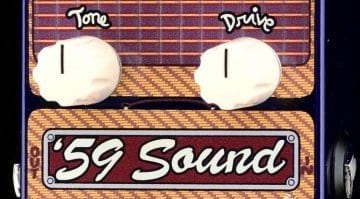

Many years ago I was in a band and the lead guitar player used a Bassman head with a 4×10 bottom. I don’t remember what kind of speakers were in it but the thing screamed. Every note rang out pure from the lowest volume to full on. To this day I haven’t heard an amp deliver such incredible sound. Every tone his Jazzmaster could inflict on it came out like it was a big block ‘57 Chevy with the pedal floored.
I, myself, was the bass player. My rig was a ‘57 Precision bass into 2 Fender Showman heads with 2 Kustom bottoms. One had 2×15” JBL bass speakers and the other had 4×10” Jensen bass speakers. I liked the Jensen’s because they spit out some nice twangy highs. That was it. No pedals, reverb or tremolo. Just us two and a shitkicking drummer.
Every gig we played people would bombard us with questions about how we got such great sound. Our answer was always ‘Fender amps and guitars’. Those amps are long gone now. My seventy year old fingers don’t work as well as they used to but man were those days a blast.
THANKS A LOT for giving me GAS for a Bassman, lol.
I must have received a lemon because this amp has more rattles than an old truck. No Way I could record with it. How it passed guilty control I don’t know